Havelock Wool was recently featured in The Construction Specifier.
Check out the article below:
Building energy codes continue to shift in the direction of increased energy efficiency, resulting in tighter and better insulated buildings. At the same time, a focus on indoor air quality (IAQ) in the built environment—and a corresponding movement toward healthier spaces—is gaining traction. As a result, a growing number of building and construction professionals are choosing to utilize high-performance, environmentally responsible materials in their projects. 
Some of the common insulation types are:
-
- fiberglass;
- sprayed polyurethane foam (SPF);
- cellulose;
- mineral wool; and
- sheep’s wool.
Connect With The Havelock Herd
Indoor air quality
While all types of insulation will ‘get the job done,’ all of them are not equal. Of growing concern are the potential health impacts of some varieties. When addressing health concerns, it is important to consider not only the adverse reactions observed when installing the insulation, but also future effects caused by the material’s inability to effectively manage moisture, resulting in the growth of mold and mildew.
From itching and respiratory irritation to flu-like symptoms and even lung disease, the effects of exposure to insulation and other building materials are beginning to attract more attention.
A key focus of the growing healthy building movement is improving IAQ and reducing the use of toxins in materials. According to an Environmental Protection Agency (EPA) study, Americans spend almost 90 percent of their time indoors. However, indoor air is typically two to five times more toxic than outside because of poor ventilation and off-gassing of toxic chemicals from products ranging from flooring and paint to furniture.
A groundbreaking study by Dr. Joe Allen of Harvard’s Chan School of Public Health examined the impact of green buildings on cognitive function. During the study, office occupants were exposed to varying levels of carbon dioxide (CO2), volatile organic compounds (VOCs), and ventilation. Researchers then measured the subjects’ performances on critical tasks in areas such as information seeking, strategy, and task orientation. On average, the participants’ cognitive scores were 61 percent higher in buildings with low VOC levels, and 101 percent higher in buildings that also had higher ventilation rates. So, how can the building industry make structures healthier?
Nature does it best
One way to counteract the negative effects of potentially toxic building materials on the occupants of a space is to choose insulation that ‘breathes,’ such as wool insulation.
Wool is a high-integrity fiber comprising amino acids, scientifically proven to irreversibly bond with (trap) chemicals (e.g.formaldehyde, nitrogen oxide, and sulfur dioxide) and thereby prevent them from off-gassing and escaping into the air. As a result, wool insulation acts as an air cleaner, helping to improve IAQ.
Sheep’s wool
 A natural insulator, sheep’s wool has evolved over thousands of years to protect the animal from the elements. Natural wool fibers are crimped and, when packed together, form millions of tiny air pockets, trapping air and keeping warmth in during the winter and out in the summer. This crimping also helps wool to retain its thickness and insulation efficiency.
A natural insulator, sheep’s wool has evolved over thousands of years to protect the animal from the elements. Natural wool fibers are crimped and, when packed together, form millions of tiny air pockets, trapping air and keeping warmth in during the winter and out in the summer. This crimping also helps wool to retain its thickness and insulation efficiency.
Since the fiber is able to absorb up to 35 percent of its net weight in moisture against up to 65 percent relative humidity (RH), wool insulation helps to eliminate condensation and moisture within a structure.
When wool fibers absorb moisture, they generate small amounts of heat. This warmth prevents condensation in structures by maintaining the temperature above the dewpoint in damp conditions, making wool highly effective at moisture management. Therefore, the chance for mold or mildew formation—and the associated health risks—is significantly minimized.
Wool outperforms all other insulation types (except for sprayfoam) from a thermal conductivity perspective. While it has an R-value of approximately 3.6 to 4.3 per inch, wool insulation typically outperforms this value due to its strong thermal conductivity and moisture management properties.
Wool insulation does not contain harmful chemicals. The material is also safe to handle, dust-free, and does not require protective clothing during installation.
Benefits of wool insulation
Utilizing a biophilic approach to design and construction, natural wool insulation is at once sustainable, renewable, and energy efficient. It is also a highly effective acoustic insulator, reducing the noise entering a building and the noise between rooms.
Additionally, wool typically maintains its thermal and acoustic insulation performance for the lifespan of a structure. Given it is a dense fiber seeking to expand rather than contract, it will not settle. When it has exceeded its useful life, it can be recycled or composted and biodegraded.
Further, wool’s integrity as a fiber eliminates the need—during the production process—for glues, bonding agents, or high heat, resulting in a very low net embodied energy. Wool is also naturally flame-resistant and self-extinguishing.
Wool insulation batts and blow-in insulation are installed in a manner similar to other types of insulation, although the machinery to install the blow-in variety is slightly different. Any skilled professionals can easily install wool insulation.
One of the primary challenges posed by this type of product is a reluctance to specify it. Builders and installers do not like to deviate from customary practices and are, at the same time, hesitant to add cost in an already competitive landscape. While wool insulation does cost more than its traditional counterpart, it more than pays for itself in in terms of longevity, lower energy costs, and healthier IAQ.
Creating a smarter wall
As efficiency becomes more of a focal point in the building equation, there is an onus to build airtight structures. While heating and air-conditioning costs can be minimized, airtight building envelopes create inherent challenges requiring reassessment. Inevitably, moisture finds its way into wall cavities. The way in which vapor intrusion is handled is paramount to building intelligently.
Foam insulation has long been viewed as the optimal solution for airtightness. However, as failure rates of these systems rise because of shrinkage, cracking, and other issues, so too does the need for alternatives.
Walls incorporating sheep wool form a low-energy, biophilic approach to wall system design and construction, leveraging the efficiency of airtightness without disrupting inherent vapor drive. They are made of nontoxic materials and structured to create a long-lasting building enclosure, delivering comfort, health, and efficiency without rot, mold, or other maintenance and health issues. The monolithic membranes are designed to allow for airtightness while offering an escape route for inevitable vapor.
Conclusion
As more architects and builders seek to improve the spaces we inhabit, building materials become increasingly ‘intelligent’ and adaptive. By interweaving natural principles with technological innovation and manufacturing, it is possible to work in harmony with nature rather than against it to create smarter, healthier buildings and people.
Connect With The Havelock Herd
 Andrew Legge is managing partner of Havelock Wool, a provider of natural wool insulation solutions. Legge has a passion for all things New Zealand and successfully leverages his experience in investment management and business development to enhance two-way trade between New Zealand and the United States. He holds a bachelor’s degree in history from Hampden-Sydney College and an MBA from the University of Chicago Booth School of Business. He can be reached at awl@havelockwool.com
Andrew Legge is managing partner of Havelock Wool, a provider of natural wool insulation solutions. Legge has a passion for all things New Zealand and successfully leverages his experience in investment management and business development to enhance two-way trade between New Zealand and the United States. He holds a bachelor’s degree in history from Hampden-Sydney College and an MBA from the University of Chicago Booth School of Business. He can be reached at awl@havelockwool.com
